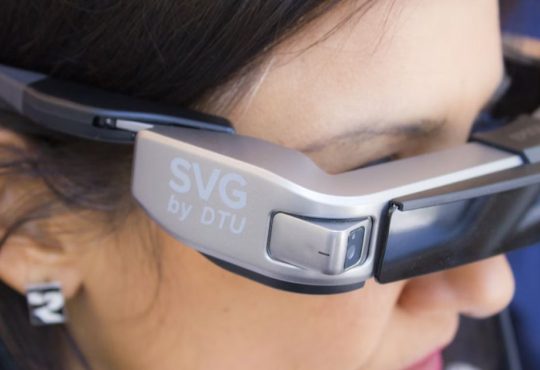Entertainment gadgets have evolved into essential components of modern life, profoundly influencing how individuals relax, connect, and consume media. With a vast array of options—from cutting-edge gaming consoles and intuitive streaming devices to high-quality wireless speakers and immersive virtual reality headsets—these tools cater to a diverse range of interests and lifestyles. No longer limited to passive amusement, they offer dynamic, interactive experiences that reflect the user’s personality and preferences.
More than just sources of entertainment, these gadgets are redefining leisure by combining technology, creativity, and convenience. They enable people to enjoy content anytime and anywhere, enhancing both social experiences and personal enjoyment. Whether used at home, during travel, or in shared moments with friends, entertainment gadgets are not only changing how we have fun but also setting the stage for the future of digital engagement.
1. Streaming Devices
Gadgets like the Amazon Fire Stick, Roku, Apple TV, and Google Chromecast are powering the shift from traditional cable TV to streaming platforms. Handheld projectors combine portability and functionality, making them ideal for professionals, content creators, and movie lovers. They enable on-the-go presentations, study sessions, creative showcases, and personal movie nights—turning any space into a versatile viewing area. These small devices transform a regular TV into a smart entertainment center by enabling internet connectivity and access to streaming apps.
- Features:
- Provides access to Netflix, Disney+, Hulu, and thousands of additional streaming apps.
- Voice search and remote controls.
- 4K HDR support for stunning visuals.
- Some offer gaming and music streaming.
- Why They Matter: They put vast libraries of movies, series, and music at your fingertips, enabling on-demand entertainment tailored to your schedule.
2. Gaming Consoles
Gaming consoles like the PlayStation 5, Xbox Series X, and Nintendo Switch continue to dominate the entertainment landscape, offering immersive graphics, vast game libraries, and social multiplayer experiences.
- Current Trends:
- Cloud gaming services (e.g., Xbox Cloud Gaming, PlayStation Now) allow play anywhere.
- Integration with VR to enhance immersion.
- Cross-platform play fosters larger gaming communities.
- Why They Matter: Consoles are no longer just for games; they have evolved into complete entertainment centers, supporting streaming apps, social media, and creative content.
3. Virtual Reality (VR) and Augmented Reality (AR) Devices
VR headsets, such as the Oculus Quest 2 and PlayStation VR, provide fully immersive digital worlds, ideal for gaming, fitness, virtual travel, and education.
- Features:
- 360-degree video and interactive environments.
- Hand tracking and realistic motion sensors.
- Growing libraries of VR games and experiences.
AR gadgets, meanwhile, overlay digital elements in the real world, enhancing entertainment and practical applications through devices like Microsoft HoloLens and smartphone apps.
- Why They Matter: VR and AR push entertainment into new dimensions, blurring the lines between reality and imagination.
4. Portable and Smart Speakers
Wireless speakers from brands like Sonos, Bose, JBL, and Apple HomePod make music portable and immersive.
- Features:
- High-quality sound with deep bass.
- Voice assistants like Alexa, Google Assistant, or Siri.
- Multi-room audio synchronization.
- Waterproof and rugged designs for outdoor use.
- Why They Matter: They bring music, podcasts, and audiobooks anywhere, seamlessly integrating entertainment with daily life.
5. Handheld Projectors and Portable Screens
Handheld projectors enable users to transform any surface into a large screen, making them perfect for movie nights or presentations on the go.
- Features:
- Compact design, fitting in pockets or bags.
- Wireless streaming and smartphone compatibility.
- Built-in speakers and rechargeable batteries.
- Why They Matter: They enable flexible, cinematic entertainment anywhere without bulky equipment.
6. Smart TVs and Advanced Display Technology
Modern Smart TVs come with built-in apps, voice control, and ultra-high-definition displays such as OLED and QLED.
- Features:
- Stunning color accuracy and contrast.
- Smooth motion for sports and gaming.
- Integration with smart home systems.
- Why They Matter: They serve as the centerpiece of home entertainment, combining stunning visuals with innovative capabilities.
7. Wearable Entertainment: Smart Glasses and Audio
Wearables like Bose Frames (audio sunglasses) and emerging smart glasses from tech companies seamlessly blend entertainment and technology.
- Features:
- Audio playback without headphones.
- Augmented reality overlays.
- Hands-free calls and voice commands.
- Why They Matter: Wearables allow entertainment on the move without interrupting daily activities.
How Entertainment Gadgets Are Changing Lifestyles
Social Connectivity: Modern entertainment gadgets have revolutionized the way people connect and interact globally. Multiplayer games enable players from different countries to collaborate or compete in real-time, fostering a sense of community and shared experience regardless of physical distance. Streaming parties, where friends or strangers watch movies, shows, or live events together via synchronized streaming platforms, create virtual social spaces that replicate the communal enjoyment of entertainment. These technologies break down geographical barriers, allowing relationships to form and thrive through shared interests and interactive engagement.
Personalized Experiences: The incorporation of artificial intelligence (AI) and machine learning into entertainment devices has revolutionized content delivery and consumption. By analyzing user behavior, preferences, and viewing habits, these technologies deliver highly personalized recommendations tailored to individual tastes. Whether suggesting the next favorite song, movie, or game, AI ensures the entertainment experience remains uniquely relevant and engaging. A high degree of personalization enhances user satisfaction by reducing the time spent searching for content and facilitating the discovery of new interests that might have otherwise remained undiscovered.
On-Demand Access: The shift towards instant, on-demand entertainment has been accelerated by advancements in mobile technology, cloud storage, and high-speed internet. Gadgets now allow users to access movies, TV shows, music, podcasts, and games anytime and anywhere—whether commuting, traveling, or relaxing at home. This flexibility accommodates increasingly busy lifestyles and diverse routines, enabling entertainment to fit seamlessly into daily life without dependence on scheduled programming or physical media. The convenience of on-demand access fundamentally changes consumption patterns, emphasizing choice and immediacy.
Creative Expression: Beyond passive consumption, many entertainment gadgets empower users to become creators themselves. Devices such as high-quality streaming webcams, microphones, and audio interfaces enable individuals to produce professional-grade videos, podcasts, music, or live streams with relative ease. This democratization of content creation opens up new avenues for artistic expression, personal branding, and social interaction. Sharing original content through social media or streaming platforms can foster community engagement and even lead to career opportunities. In this way, entertainment gadgets serve as both tools for enjoyment and catalysts for creativity.
Choosing the Right Entertainment Gadget
When selecting gadgets, consider:
Purpose: Understanding the primary use of an entertainment gadget is essential in guiding the selection process. Whether the focus is on gaming, streaming movies or music, socializing through video calls or online communities, or enjoying entertainment while traveling, each use case demands different features and performance levels. For instance, gaming devices often require powerful processors and high-refresh-rate displays, while streaming gadgets prioritize smooth video playback and app compatibility. Portable entertainment devices emphasize battery life and compact design to support on-the-go usage. Clearly defining the purpose helps narrow down options that deliver the best experience for the intended activity.
Compatibility: Ensuring that the gadget seamlessly integrates with existing technology is critical for convenience and functionality. This means checking if the device supports the operating systems, streaming services, and communication platforms already in use. Compatibility extends to various connectivity options, including Bluetooth, Wi-Fi, USB, and HDMI, which affect how easily the gadget connects to other devices, such as smartphones, TVs, or speakers. A compatible gadget minimizes technical frustrations, enabling smoother interactions across devices and facilitating easier content sharing.
Portability: The importance of portability depends on how and where the gadget will be used. Home-use devices prioritize performance and feature richness oversize and battery life, allowing for larger designs and continuous power supply. Conversely, gadgets meant for travel or outdoor use must be lightweight, compact, and equipped with long-lasting batteries to support uninterrupted entertainment away from power sources. Evaluating portability needs ensures the device matches the lifestyle, whether that means a stationary setup or a travel-ready companion.
Budget: Price is often a determining factor in selecting entertainment gadgets, with a broad spectrum available from budget-friendly to premium. High-end devices offer advanced features, superior build quality, and more extended longevity, which may justify their cost for frequent or demanding users. However, affordable options have improved significantly and can deliver impressive performance and value for casual users or those new to specific technologies. Balancing budgets with desired features and use cases ensures that investments are both practical and satisfying.
User Experience: The overall ease of use and satisfaction with an entertainment gadget hinges on its design and support ecosystem. Intuitive controls and user-friendly interfaces reduce the learning curve, allowing users to focus on enjoyment rather than troubleshooting. Robust app ecosystems expand the device’s capabilities, offering a wide range of content and customization options. Reliable customer support and firmware updates further enhance the experience by addressing issues promptly and introducing new features. Prioritizing user experience leads to greater long-term engagement and fewer frustrations, making entertainment more accessible and enjoyable.
The Essential Role of Entertainment Gadgets in Modern Life
Entertainment gadgets are no longer mere luxuries; they are essential tools that enrich daily life, fuel creativity, and foster connections. Advancements in technology will drive the evolution of these devices, delivering increasingly immersive, personalized, and accessible entertainment experiences. Whether you’re a casual viewer, a hardcore gamer, or a music enthusiast, the right gadget can transform how you play, watch, and connect with the world around you.





